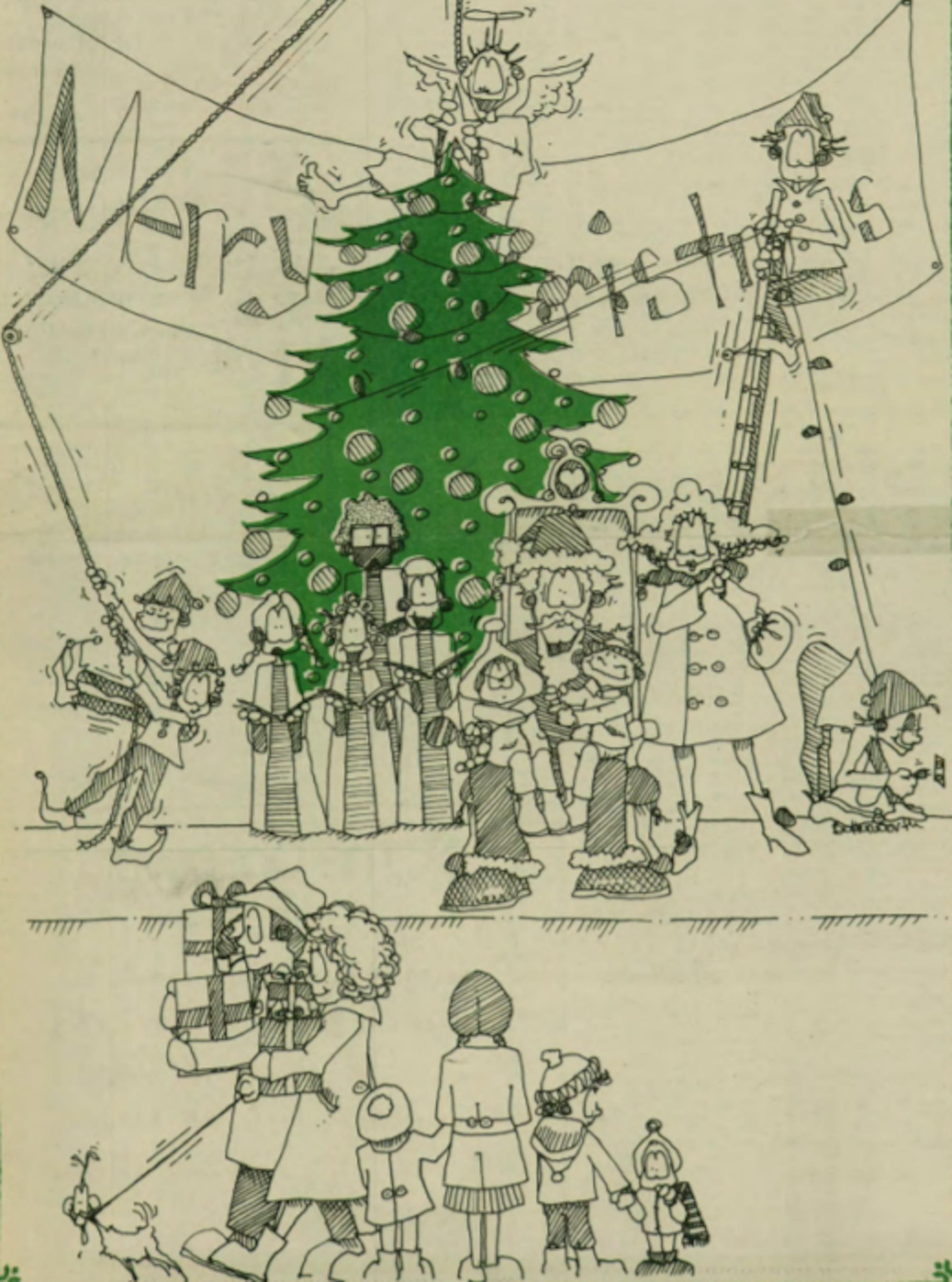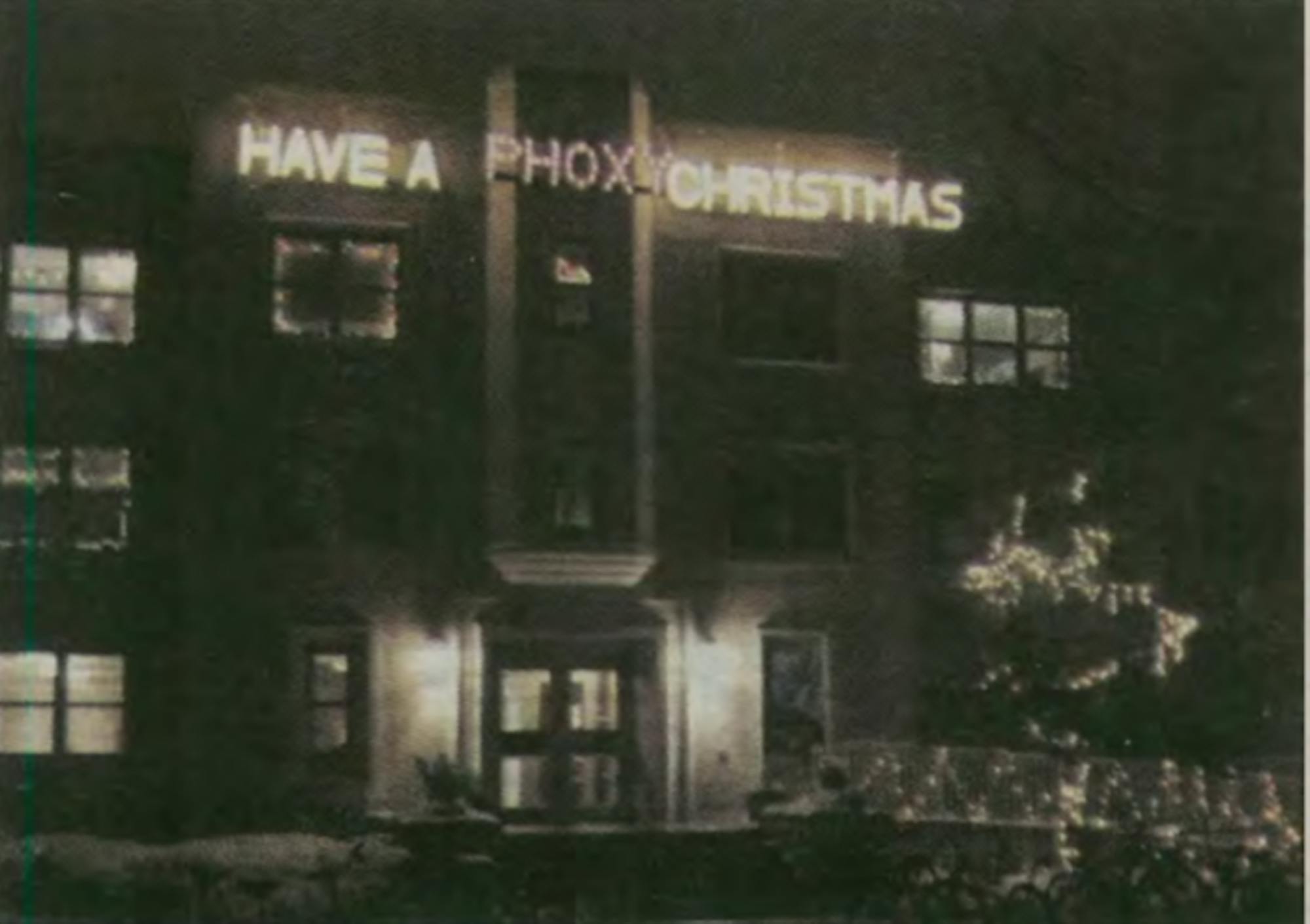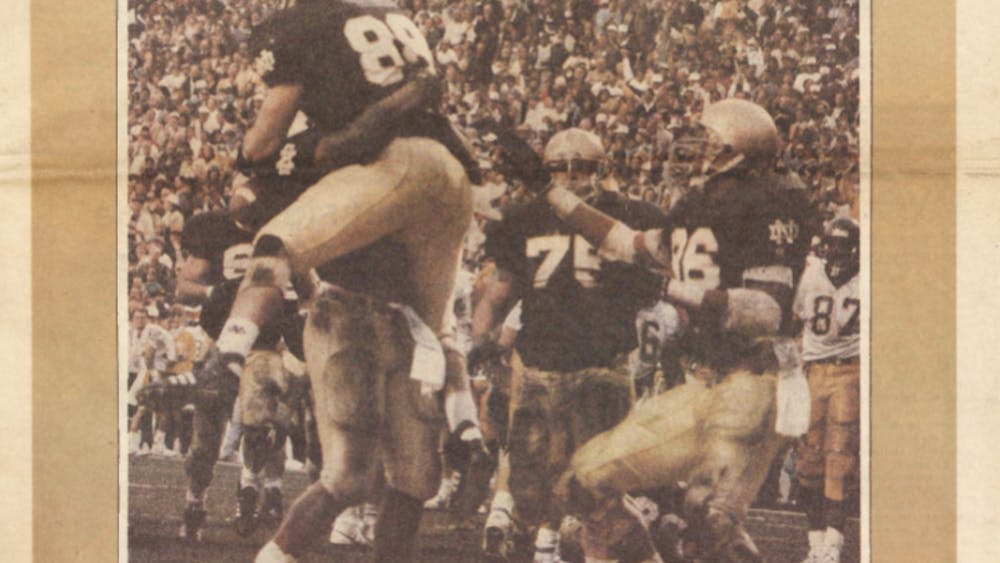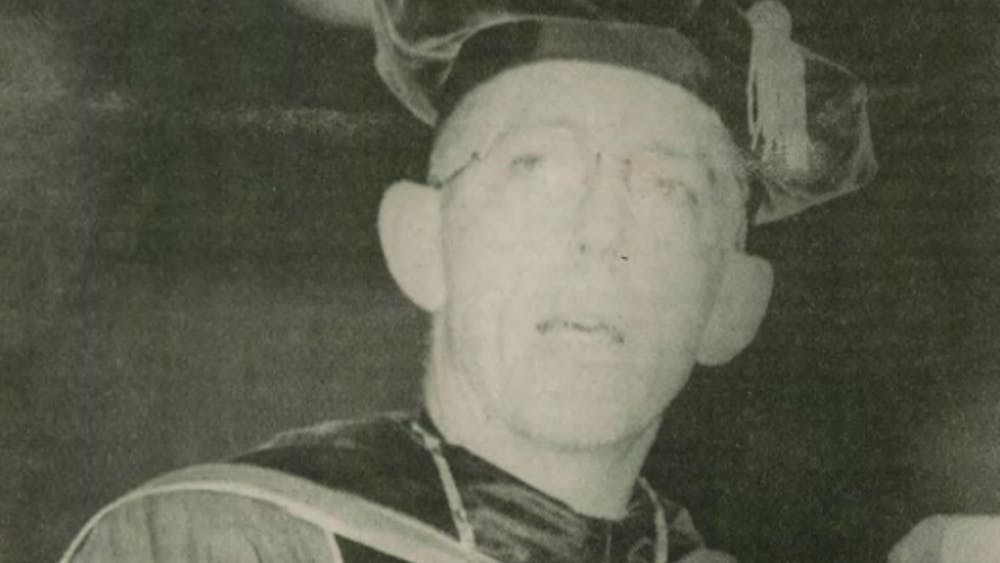

The Christmas spirit at Saint Mary’s
Dec. 9, 1976 | Beth Welch | Nov. 30, 1984 | Julia Hewson | Research by Spencer Kelly
In the 1970s and ‘80s, Christmastime at Saint Mary’s College featured festivities, feasts, singing … and stuffed animals.On Dec. 8, 1976, Saint Mary’s junior students conducted the “Christmas Animal Walk,” held annually since 1935. The junior girls dressed in nightgowns, robes and slippers and walked around to each of the dorms singing carols.Following tradition, students of other classes placed stuffed animals outside their dorm room doors, facing away from the Church of Loretto. As the carolers walked by, they turned each stuffed animal to face the church.Stevie Wernig, then-assistant dean of student affairs, said the stuffed animals had symbolic significance.“The turning of the stuffed animal toward the Church of Loretto is a remembrance of the coming of the animals to the stable when Christ was born,” Wernig said. “The caroling procession is symbolic of the angels announcing the birth of the Christ child.”Another beloved Saint Mary’s Christmas tradition was the Madrigal Dinner, an event featuring food and music from the Elizabethan era.The 12th-annual edition, held on both Dec. 4 and 5, starred 20 performers and 14 servers dressed in period-correct costumes. The evening also included court dancers, harpsichord music and performances of other 16th-century instruments.The 1984 Madrigal Dinner was held at the Haggar Hall Center, which was decked out in decorations and lighting designed to “create an authentic 16th-century atmosphere.”Event coordinator Clayton Henderson said the dinner was the product of a collaboration from Saint Mary’s dance, music and theater departments.“Everyone has come together from the different departments and worked just like a family to put this production together,” Henderson said.These two events indicate the flourishing Christmas spirit at Saint Mary’s, something Wernig emphasized.“Christmas here has a real tradition,” Wernig said. “Years after graduation, SMC girls remember the special ways we celebrated here.”Axing the “X” in “Xmas”
Dec. 7 2007 | Karen Langley | Researched by Christopher Russo
Despite being a prominent Catholic university, Notre Dame’s Christmas decor is limited: a multicolored tree outside God Quad, garland throughout O’Shag and doors covered in wrapping paper. In December of 2007, Karen Langley (‘08) covered the installation of a 19-foot-wide holiday sign hung atop Pangborn Hall. The original sign read “Have a Phoxy Xmas” in purple lights.The hall’s former rector, Kuukua Yomekpe, received confirmation from University maintenance workers that they would hang the sign, but no such action was taken. Yomekpe then received a call from associate vice president for residence life Bill Kirk, who told her the sign could not be hung as it was, so as not to “take Christ out of Christmas.” The sign was crafted in the months leading up to the holiday season by former hall president Allie Carrick (‘09). The term “Xmas” was used in order to appropriately balance the sign and cut down on costs. Kirk admitted that he did not think the students intended to be disrespectful, but he asserted that publicly visible decorations fall under the administration’s domain. Kirk and Yomekpe agreed to have the sign altered by the University carpentry shop. They axed the “X” and added “Christ,” paid for by the maintenance department.
Last Christmas: a bittersweet season for seniors
Dec. 9, 1968 | Joel Connelly | Researched by Uyen Le
For seniors at Notre Dame across the years, the holidays are a nostalgic time, as we celebrate our last Christmas on campus with friends and prepare ourselves for our last semester of college. On Dec. 9, 1968, Joel Connelly (‘69) reflected on what he deemed “The Senior Christmas,” those last few weeks of fall semester that mark the beginning of the end for seniors on their college journey.Connelly first thought back to his freshman year, when winter break could not come soon enough, as his fellow Farley resident, Dave White, “would mark a giant ‘X’ through another day and then pronounce the number of days remaining until the hour of liberation.”As an underclassman, Connelly took his time at Notre Dame for granted, as “there was in those days a security in the present.” In a matter of months, he would not be able to have those random long conversations in the middle of the night with his dorm neighbors and close friends. “Many have built an existence at Notre Dame on five or six close friends and perhaps an equal number of faculty,” he wrote, “whereas we are now tightly knit little groups we will soon be radically alone.”The uncertainty of the future plagued Connelly’s mind. Connelly’s college years were backdropped by the Vietnam War, so on top of the usual job hunt that occupies seniors’ time, the prospect of the draft also loomed over Connelly and his classmates’ heads. Though looking ahead was unpleasant for Connelly, he also reflected fondly on his experience at Notre Dame, as over the years “a feeling has developed for this university. This affection is best manifested in the relationships we have developed while here.” Because of the friendships that had been cultivated throughout the years, the holidays brought a dread for Connelly and his senior peers. In an effort to protect their own feelings, many of his friends paradoxically expressed an interest in isolating themselves — a seeming coping mechanism to prepare for the impending separation post-graduation. Connelly observed that, at the senior Christmas parties, “instead of joviality there was a deadly solemnity.” However, for Connelly this solemnity did not detract from the holiday spirit but revealed the deep feelings of fraternity that had developed among his group of friends and a desire to establish direction. The Senior Christmas, for him, was an opportunity for reflection and imagination, wherein seniors “are going to be thinking of what lies ahead and in which direction we will be headed as the Golden Dome and its icon fade into the distance.”








